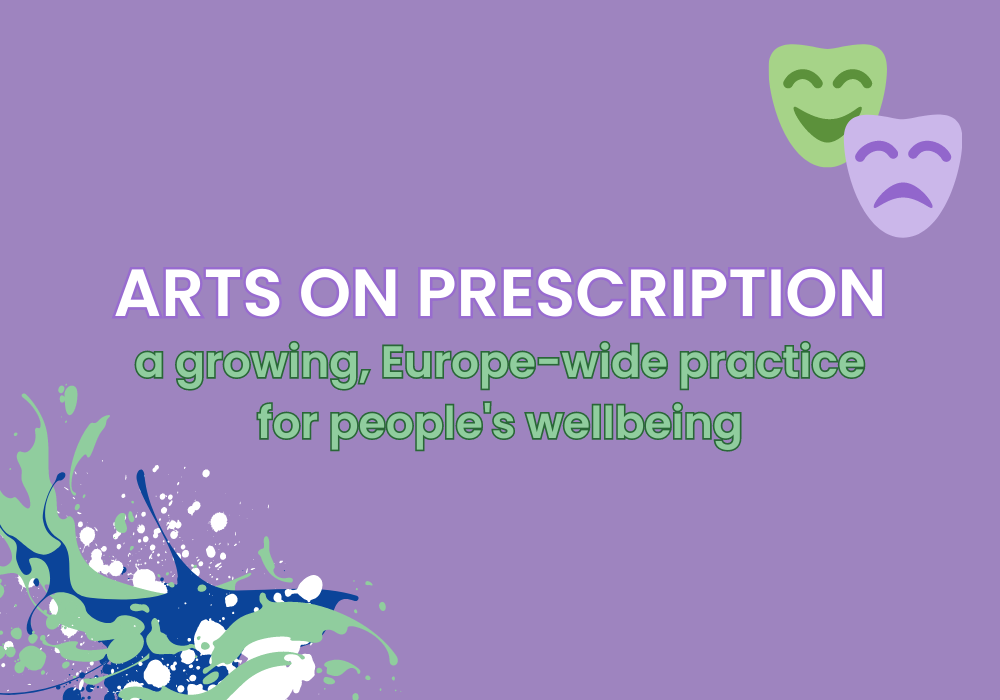Month: August 2023
Arts on Prescription: a growing, Europe-wide practice for people's wellbeing
PERFARE's study visits have been incredibly enlightening when it comes to Culture&Care practices.
The partners had the chance to meet many projects up close, which engage performing arts practices to prevent and alleviate social, mental and physical conditions.
One of the most interesting concepts is that of Arts on Prescription. This practice isn't exactly new on the market, being around since 1994, but it now drawing more and more attention all over Europe.
What is Arts on Prescription?
Arts on Prescription (AOP) is a program where healthcare professionals refer individuals to art workshops to improve psychosocial health. It is part of social prescribing and benefits those with mild to moderate mental health issues.
AOP is a non-medical approach that aids psychophysical recovery and considers social, economic, and environmental factors. It promotes holistic well-being and recognizes the impact of non-biophysical factors on health.
History
The United Kingdom was the pioneer in offering the integration of social and cultural activities alongside therapeutic prescriptions.
Starting in the mid-1990s, general practitioners began incorporating social and cultural elements into their treatment plans.
The first example was the AoP Stockport, launched in 1994, which provided individuals with mild to moderate anxiety or depression the opportunity to engage in various creative activities aimed at improving their mental well-being.
A few European examples
While in the UK most AoP programs are driven by artists, in the Scandinavian model they rely more often on museum and cultural organizations and institutions.
The project promoted by the municipality of Malmö, with the support of the Skåne region, goes in this direction. A typical program is structured over approximately 10 days and offers participants with mental health issues a series of artistic and cultural activities. Groups consist of about 8-12 people and the activities vary from program to program and may include theatre, museum and gallery visits, music and singing, visual arts.
Read more: https://bit.ly/ArtsOnPrescriptionMalmö
In Italy, the practice of directing artistic and cultural programs towards health promotion, disease prevention, and the management of pathological conditions, including degenerative diseases, is gradually gaining ground.
An example is the AOP project located in Emilia-Romagna, where the regional authority, in collaboration with the ATER Foundation, launched Sciroppo di Teatro. This project brings together 153 general practitioners, 236 pharmacies, and a network of 36 theaters and companies specializing in theater for children and young people. The project aims to contribute to the development of cultural welfare policies, particularly focusing on theater for children and families.
Read more: https://bit.ly/SciroppodiTeatroITA
Another example of a recently launched AoP project is the one funded and promoted by the Interreg Baltic Sea region: Arts on Prescription in the Baltic Sea Region.
Local and regional public authorities, in collaboration with cultural institutions, are piloting the program, evaluating its health effects, organizational setup, and economic benefits. The arts on prescription model is then transferred to other cities and regions, supported by an online practitioner's guide and a rent-an-expert program.
Furthermore, the project aims to initiate dialogue with national authorities and health insurance funds to enhance structural support and financing options for arts on prescription.
Read more: https://bit.ly/ArtsOnPrescription-InterregBalticSeaRegion
Like them, Greece is also launching a national AoP programme, which provides for a structure similar to that already developed in the UK and in the Scandinavian region.
Read more: https://bit.ly/CulturalPrescriptionGreece
These are just a few examples of AOP Programs existing Europe-wide. Many more are growing every other day, signaling a message well-received when it comes to WHO studies on the benefit of cultural activities on mental and physical health.
These studies comparing the overall life satisfaction levels of individuals with a vibrant cultural life to those experiencing cultural exclusion reveal a difference of more than ten percentage points in favor of the former. In addition to enhancing mood and life satisfaction, the use of art as a prescribed intervention can breathe life into the cultural sector and, particularly, the performing arts industry.
Article by
Ilaria Ciaroni
Andrea Belegni

